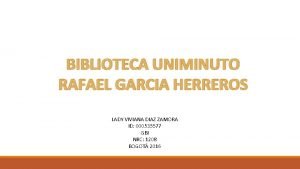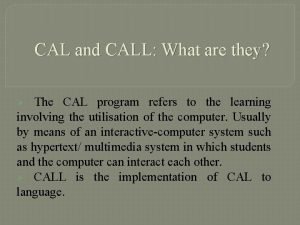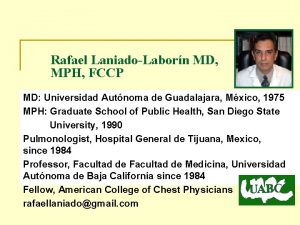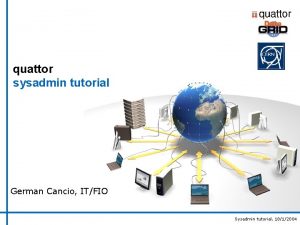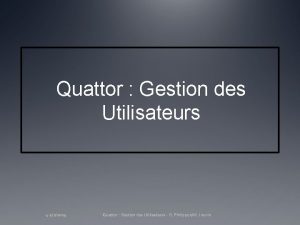Quattor tutorial Introduction German Cancio Rafael Garcia Cal








- Slides: 8

Quattor tutorial Introduction German Cancio, Rafael Garcia, Cal Loomis

Introduction u Agenda u Laptop page registration issues? u Notes: n n n You will work in pairs during the practical exercises (limited dvp nodes) Use only one laptop per pair please s limited power bars! s Potentially limited wireless network!!! Laptops will be required only for terminal (SSH) connections No need to install any quattor software unless you really want to : -) s u There are less practical exercises than theory slides ; -( u Your feedback will be most welcome for improvements! u Who did the homework? n° 2

Quattor in CERN context: ELFms stands for ‘Extremely Large Fabric management system’ Subsystems: u : configuration, installation and management of nodes u : system / service monitoring u : hardware / state management Node Configuration Management Node Management u ELFms manages and controls most of the nodes in the CERN CC n n ~2300 nodes out of ~ 3000 Multiple functionality and cluster size (batch nodes, disk servers, tape servers, DB, web, …) Heterogeneous hardware (CPU, memory, HD size, . . ) Supported OS: Linux (RH 7, RHES 2. 1, RHES 3 / Scientific Linux 3 – IA 32&IA 64) and Solaris (9) n° 3

Improvements wrt EDG-LCFG u New and powerful configuration language True hierarchical structures n Clearly defined interfaces and protocols n Extendable data manipulation language n Mostly independent modules n (user defined) typing and validation n SQL query backend u Portability n u Plug-in architecture -> Linux and Solaris Enhanced components n u Modularity n u u u Sharing of configuration data between components now possible u “light” functionality built in (eg. package management) Improved scalability n Enabled for proxy technology n NFS mounts not necessary any longer Enhanced management of software packages New component support libraries n ACL’s for SWRep n Native configuration access API (NVA-API) n Multiple versions installable n n No need for RPM ‘header’ files Stick to the standards where possible n n Installation subsystem uses system installer Components don’t replace Sys. V init. d subsystem u Last but not least…: Support! n n EDG-LCFG is frozen and obsoleted (no ports to newer Linux versions) LCFG -> EDG-LCFGng -> quattor n° 4

Differences with ASIS/SUE ASIS: u Scalability n u SUE: u Focus on configuration, not installation u Powerful configuration language HTTP vs. shared file system Supports native packaging system (RPM, PKG) u Manages all software on the node u ‘real’ Central Configuration database u (But: no end-user GUI, no package generation tool) n n True hierarchical structures Extendable data manipulation language (user defined) typing and validation Sharing of configuration data between components now possible u Central Configuration Database u Supports unconfiguring services u Improved depenency model n u Pre/post dependencies Revamped component support libraries n° 5

Differences with ROCKS u Rocks: better documentation, nice GUI, easy to setup u Design principle: reinstall nodes in case of configuration changes n n No configuration or software updates on running systems Suited for running long production jobs? Efficiency on batch nodes, upgrades / reconfigs on 24/24, 7/7 servers (eg. gzip security fix, reconfig of CE address on WN’s) u Assumptions naming on network structure (private, public parts) and node u No indication on how to extend the predefined node types or extend the configured services u Limited configuration capacities (key/value) u No multiple package versions (neither on repository, nor simultaneously on a single node) n Eg. different kernel versions on specific node types u Works only for RH Linux (Anaconda installer extensions) n° 6

Welcome Back! u Please sit at the same place as yesterday! u We will continue working in pairs, connecting to the same nodes as yesterday. u If you don’t remember your node name, check the handouts. u If you don’t have the handouts anylonger… come and talk to us. n° 7

http: //quattor. org n° 8


